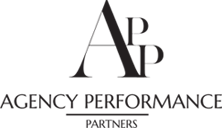Are you interested in using industry best practices in your insurance agency strategic plan?
We are about halfway through the first quarter of 2019. While many people do strategic planning once a year for the following year, any time is really a good time to institute a strategic planning session. Even if you had some planning done at the end of 2018, as your 2018 year end financials are finalized, it is a good opportunity to revisit your plans for the year and see if anything should be adjusted from a budget and goal perspective.
Strategic Planning and Budgeting
All strategic planning should be done within the focus of an annual budget. If we build our expectations around expense and income, we can clearly define them and be able to identify what has worked and what needs to be improved. New expenses should be able to fit into the budget with an eye on their effect on income. This is not to say expenses should only be incurred if there is a first year return, as there are certainly occasions where we may invest in a system, project, or program. However, we should always determine the effect of our strategic planning on the budget.
Best Practice Studies
There are numerous sources to obtain Best Practice information. If you do not belong to a group or program that directly offers one, a great resource to use is the Independent Insurance Agents & Brokers of America (IIABA) Best Practice Study put out with the assistance of Regan Consulting. This study does a great job of breaking down expenses, growth, productivity and other key metrics based on agency size. In most cases, it further breaks the metrics down by average agency as well as the top quartile to be able to compare your agency against these two benchmarks.
How to Compare Your Agency
The first step in using the Best Practice Study is to calculate your own numbers. It is critical here to understand how the numbers you may pull off your financial statement may not be exactly comparable to the study.
- Pro Forma Process – All of the agents in the study go through a pro forma process to create standardization. For example, when determining payroll, you may have one agency that has no owner, so all of the payroll is true payroll. Another agency of the same size may have an owner who pays themselves a high salary versus having a higher income for the agency (or vice versa). The pro forma process creates a standard at which owners, CEOs, etc. are all applied against the financials the same way.
- Additional Metrics – While most financials will have total expenses and net income, there may be some other metrics that need to be added such as EBITA or sum totals of expenses. Some expenses may be treated one way by your accountant but may fall into another bucket in the study. The IIABA study has a unique metric called the Rule of 20 (calculated by adding 50% of an agency’s Pro Forma EBITA margin to its organic commission & fee growth rate in case you were wondering). This would certainly be a metric you would have to calculate separately from your typical financials.
The next step is determining which metrics you want to focus on for your comparison. There are many metrics in the studies, and based on the size of your agency and the amount of capacity you or someone on your staff has to invest in this project, you will most likely not choose to compare every one. There are great metrics around new business and book size compared to staff typically broken down into revenue, compensation, and spread per employee. This can be further broken down by responsibility (producers for account managers). Another area to focus on is the renewal rates, new business growth, and contingent income. Growth is typically also further broken down into organic growth vs. total growth. The last major category breaks down the expenses as a percentage of the Pro Forma Net Revenues. This can give you an idea of how your expenses break down in comparison to agencies of a similar size.
Getting started in using industry best practices in your insurance agency strategic plan be a little daunting. There is a lot of information contained in them, and often formulas have to be cracked and applied to show a true comparison. Obviously not every agency is the same either, so we need to be careful not to work only to get in line with the best practice number. We also can’t give ourselves too much leeway by making excuses as to why we are off. Here at APP, we can work with you as part of our Agency Assessment or through contracted consulting hours to assist you in this process. Whether you work with us or do it on your own, benchmarking your staff and your agency against your fellow agents is one of the best ways you can determine the strengths, areas of needed improvement, and overall health of the agency.



